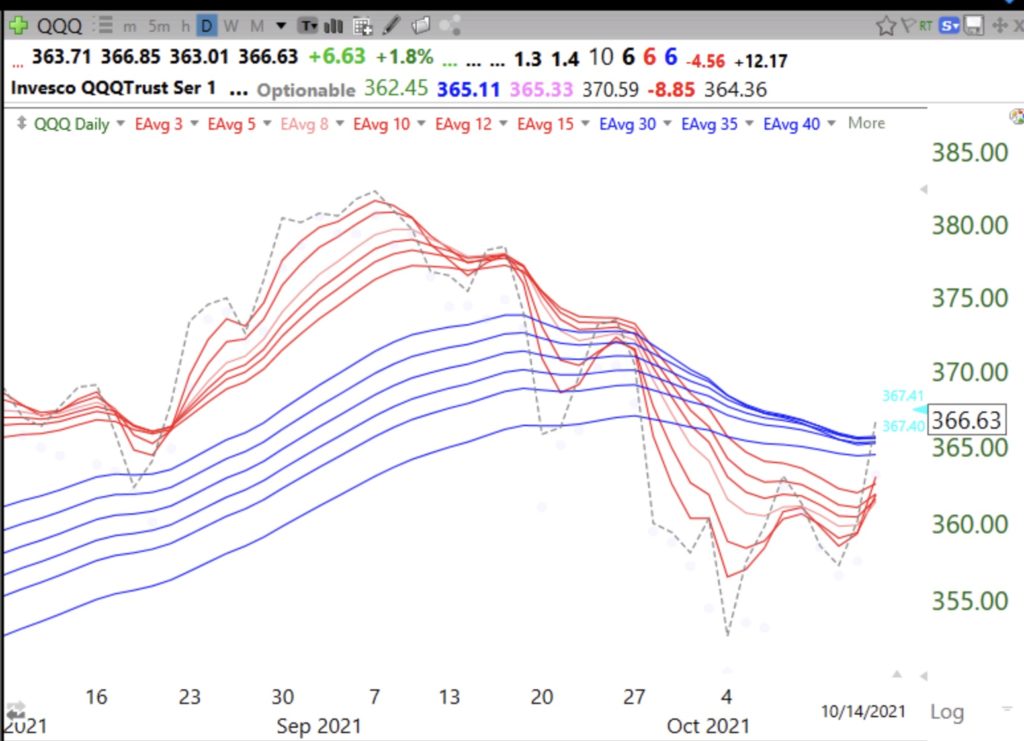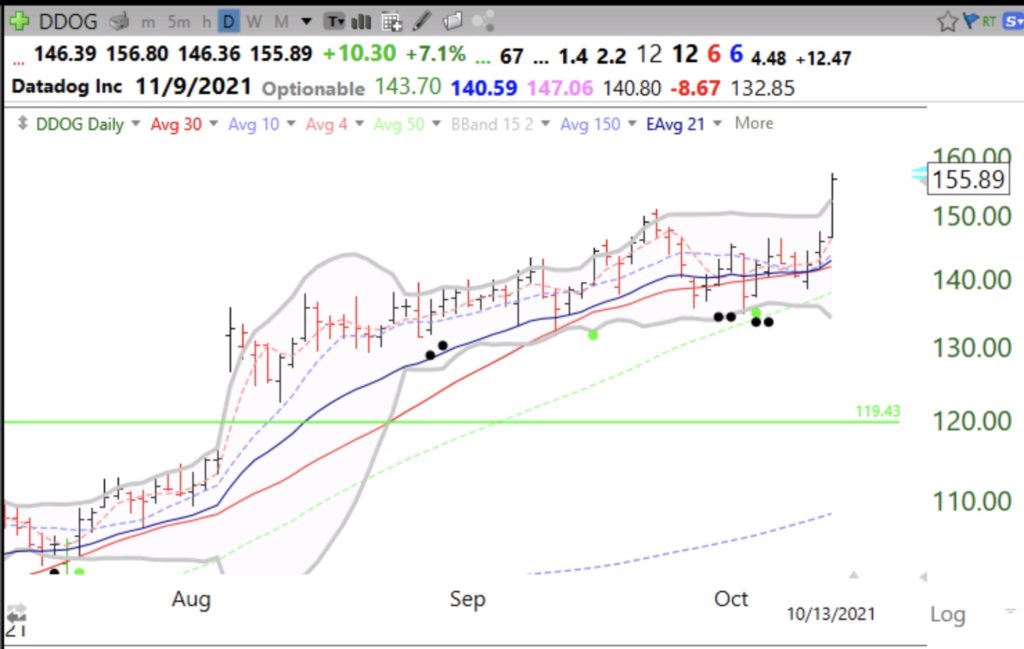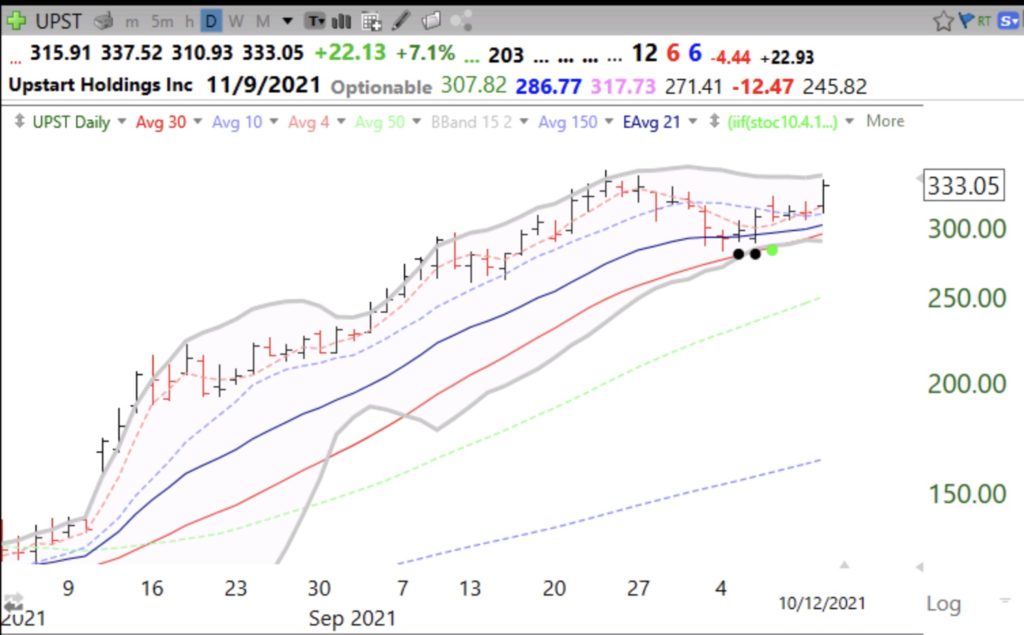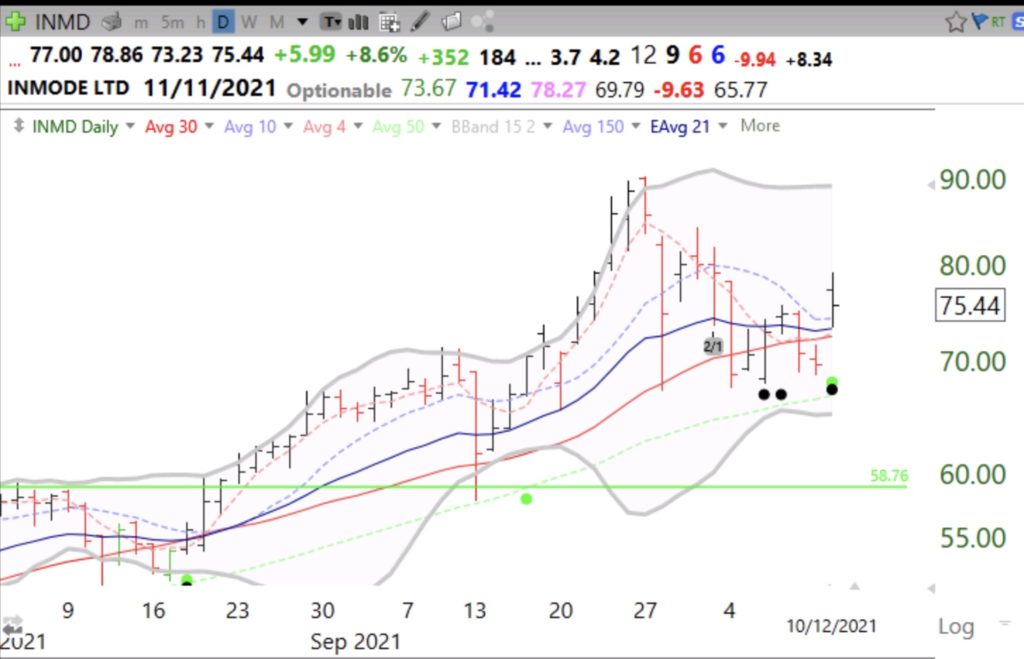 Dr. Wish
Dr. Wish
Blog post: Day 16 of $QQQ short term down-trend; But $UPST moving up after green and black dot signals, see chart. Masked by the the indexes, many promising stocks are setting up. See $INMD chart too
UPST took off after its last earnings release in early August. This year’s earnings are projected to rise +893%. I missed the rise last August and was waiting for the stock to become oversold and to bounce. That is what the dots show. When earnings are released on November 9, we could see a repeat. Note the constricting Bollinger bands too. It needs to hold the bounce.



